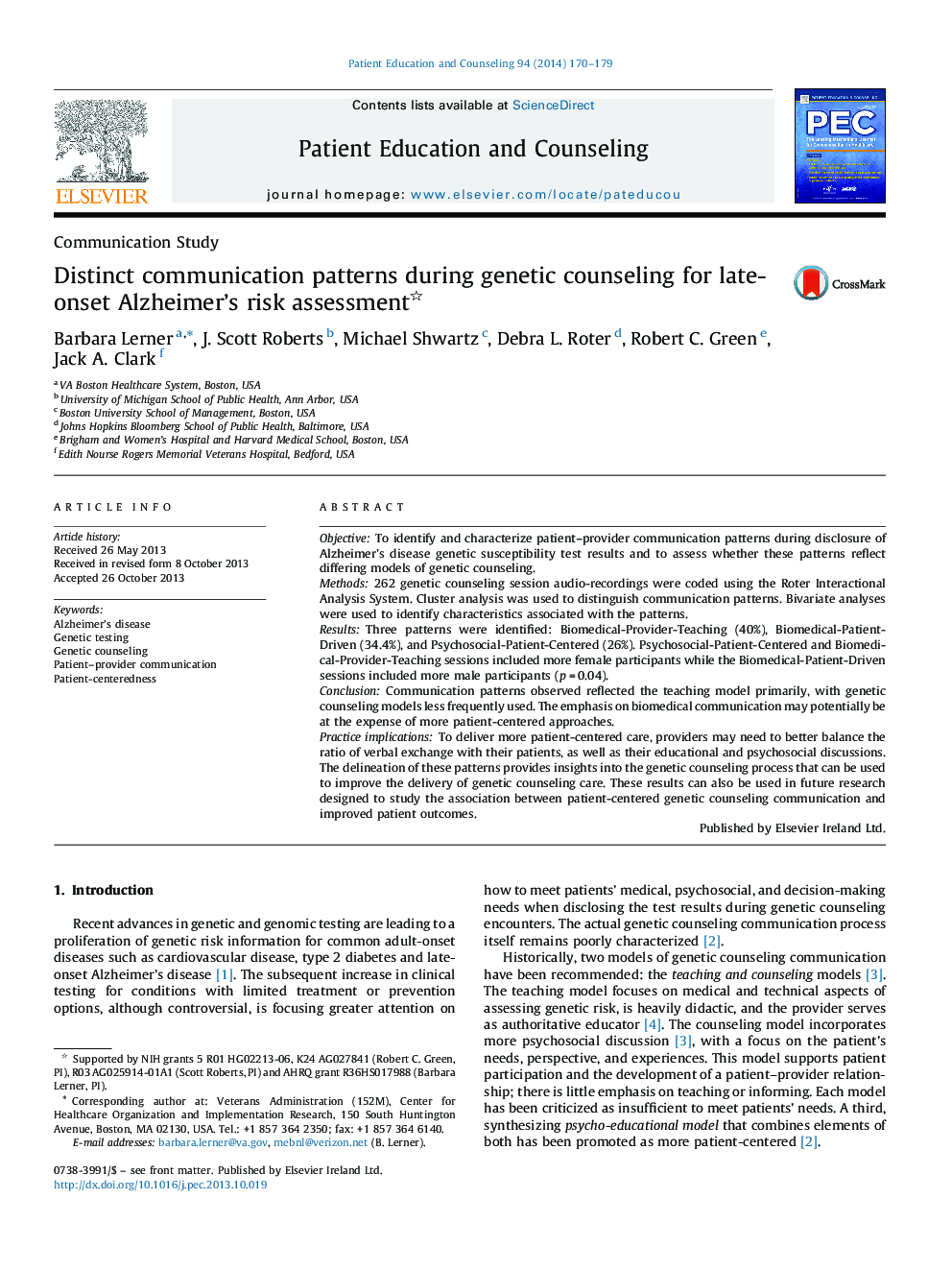| Article ID | Journal | Published Year | Pages | File Type |
|---|---|---|---|---|
| 3813869 | Patient Education and Counseling | 2014 | 10 Pages |
ObjectiveTo identify and characterize patient–provider communication patterns during disclosure of Alzheimer's disease genetic susceptibility test results and to assess whether these patterns reflect differing models of genetic counseling.Methods262 genetic counseling session audio-recordings were coded using the Roter Interactional Analysis System. Cluster analysis was used to distinguish communication patterns. Bivariate analyses were used to identify characteristics associated with the patterns.ResultsThree patterns were identified: Biomedical-Provider-Teaching (40%), Biomedical-Patient-Driven (34.4%), and Psychosocial-Patient-Centered (26%). Psychosocial-Patient-Centered and Biomedical-Provider-Teaching sessions included more female participants while the Biomedical-Patient-Driven sessions included more male participants (p = 0.04).ConclusionCommunication patterns observed reflected the teaching model primarily, with genetic counseling models less frequently used. The emphasis on biomedical communication may potentially be at the expense of more patient-centered approaches.Practice implicationsTo deliver more patient-centered care, providers may need to better balance the ratio of verbal exchange with their patients, as well as their educational and psychosocial discussions. The delineation of these patterns provides insights into the genetic counseling process that can be used to improve the delivery of genetic counseling care. These results can also be used in future research designed to study the association between patient-centered genetic counseling communication and improved patient outcomes.
